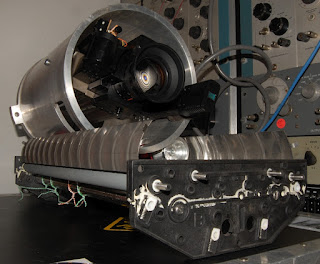So, when I connected the pin 3 hot, pin 2 ground configuration of the Otari to the pin 2 hot pin 3 neutral (actually earth referenced thanks to my inclusion of unbalanced 1/4") configuration of the mixer output, a whole lot of nothing happened. Nothing to the tune of even killing the monitor feed to the amplifier.
I had entered into really easy diagnostics, unplug cable = sound, plug it in = zilch. So, with a nod to the widely published pin 2/3 issue, I built a pair of XLR cables with pins 2 & 3 swapped. Solved. Of course, at this point I recall a few months previous while I am working on the basket case MX5050-8 and can't get any channel response out of it, which, at that point was a step backward but given the hard life the machine has had I place it closer to the parts bin. Why yes, I had been feeding it audio from the Autogram while failing to get signal, it was just prior to the monitor amp feed modification.
So, the 2/3 swap XLR cables worked here too. I was able to commit signal to tape and playback (on conventional XLR), and it sounded good. So, my options now are to make another 6 pin swap XLR cables, or just modify the machine to reflect pin 2 hot. Ready to cut traces and jumper stuff at board level, I was met with this magnificent sight. Build six special purpose cables, or simply rewire 16 connectors?
Easy decision.
I did this, from poor placement in a room (that gets gear hauled in and out of)...
..and this. Very preliminary internet searches do not favor the notion that this is an easy & standard current production off the shelf part. Since the switch still works I think I may drill a small pilot hole in the lever portion and turn down a bit of small bar stock to have an end pin, then epoxy the new arm in place. Worse case I'll still have to find a replacement switch.
Since this machine got hammered the interior finds include stuff like this, from the side panels.






















































